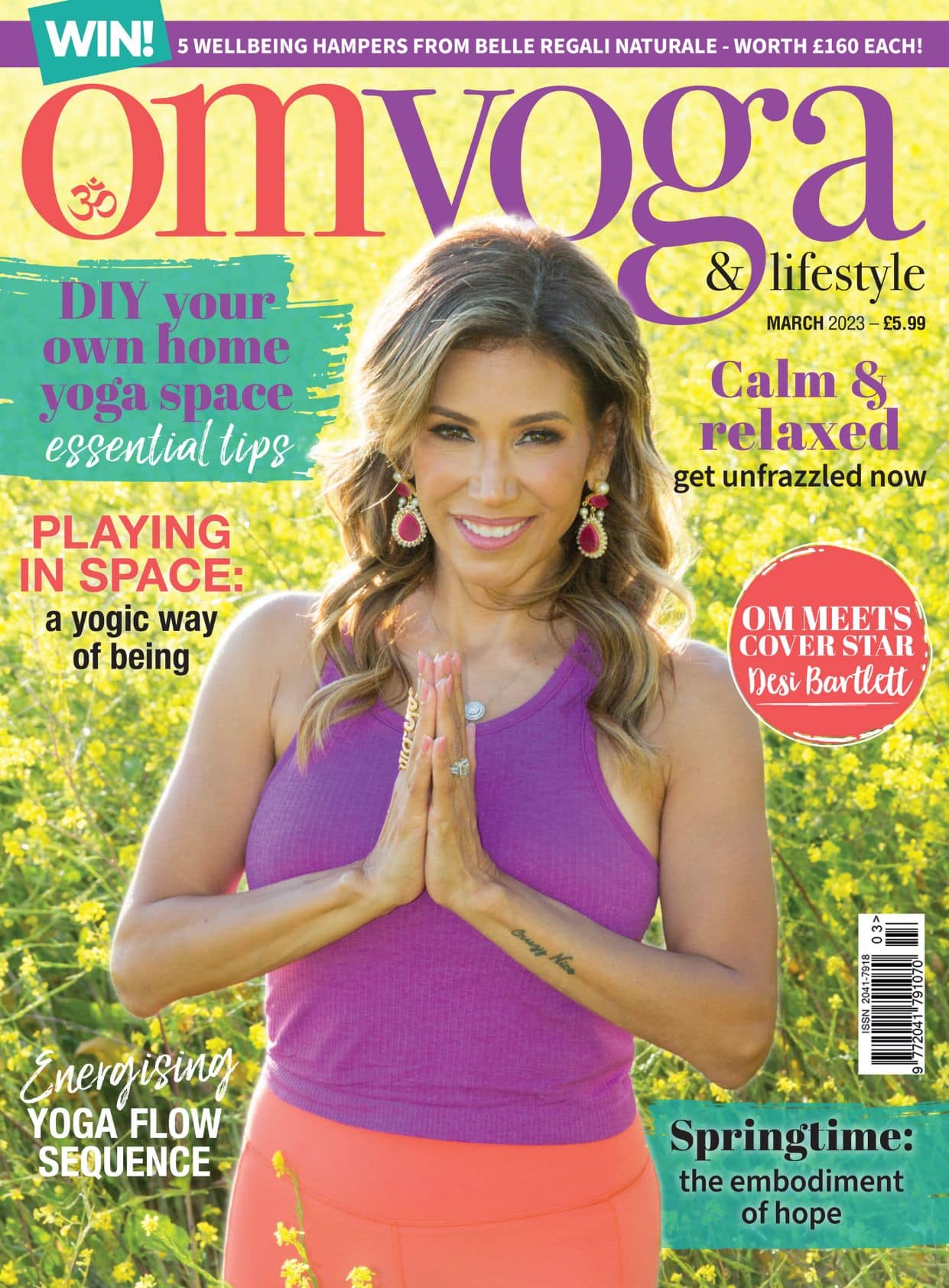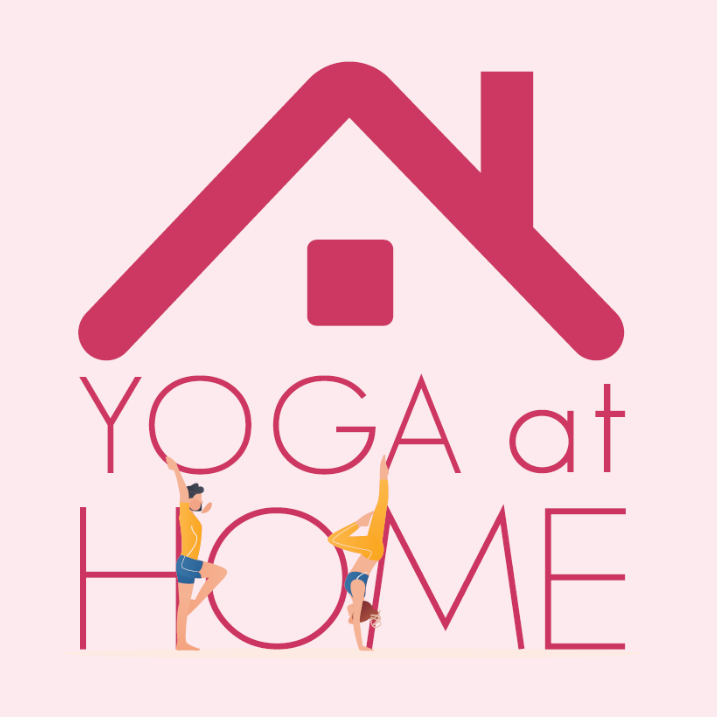
Keep on rolling
A playful vinyasa that works with a few repetitive movements to explore the mobility of the spine and agility of the mind as we roll from seated into standing.
By Isabel Lankester
This is a practice which is quietly challenging yet energising. This practice will gently mobilise the spine, in particular the thoracic spine. It will also help to stretch the muscles of the back and the hamstrings. By rolling the spine in this playful way we can improve our postural awareness and gently wake up the nervous system.
Begin lying on your back, place the soles of your feet to the floor and start to connect with your breathing, gently encouraging the lower spine to press downwards into the earth. Immediately notice how the density of the floor is sitting against the spinal column. Start to hug your knees into your chest and begin to roll the spine from side to side, gently massaging the muscles of the back. Take a few breaths here before tucking your hands behind your knees and rolling the legs up and over your head. Start to rock and roll the spine up and down the mat, gaining a little more momentum with each rock.

We shall now start to roll into seated. Hook the right ankle in front of the left to help you stand up into a forward fold. Sit back down again, rocking the legs up and over your head, this time switching it up and having the left ankle in front of the right. Try standing up again. Repeat this pattern a couple more times on each side. Finishing in a forward fold at the top of your mat. Place the feet parallel. Hands either behind the ankles (Uttanasana) or finger tips just grazing the floor. Feel the whole length of your spine hang softly towards gravity. Pause here for a few moments while you catch your breath and allow your chin to gently press towards your chest.
Press down into your feet and stand up, reaching your arms to the sky (Urdhva Hastasana, not shown in the photographs), looking towards your thumbs. Now place your hands at your heart (samasthiti, not shown) and relax your breathing before reaching your hands back up as you inhale and then forward folding back to Uttanasana as you exhale.
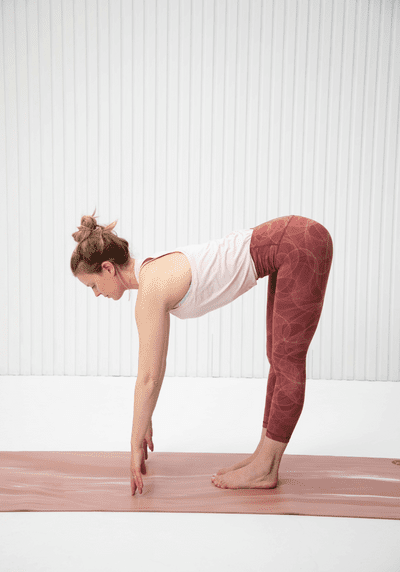
Inhale to a half way lift (Ardha Uttanasana). Now plant your hands and step back to plank pose. Engage your abdominals here, feeling the front of the legs switch on before bending your elbow into a low plant (Chaturanga Dandasana, not shown). Inhale, lengthen through the legs, press into your hands to rise up into upward-facing dog, (Urdhva Mukha Svanasana). Feel the front of your feet press into the ground, back of the neck is long as you feel the shoulder blades roll backwards to open the heart.
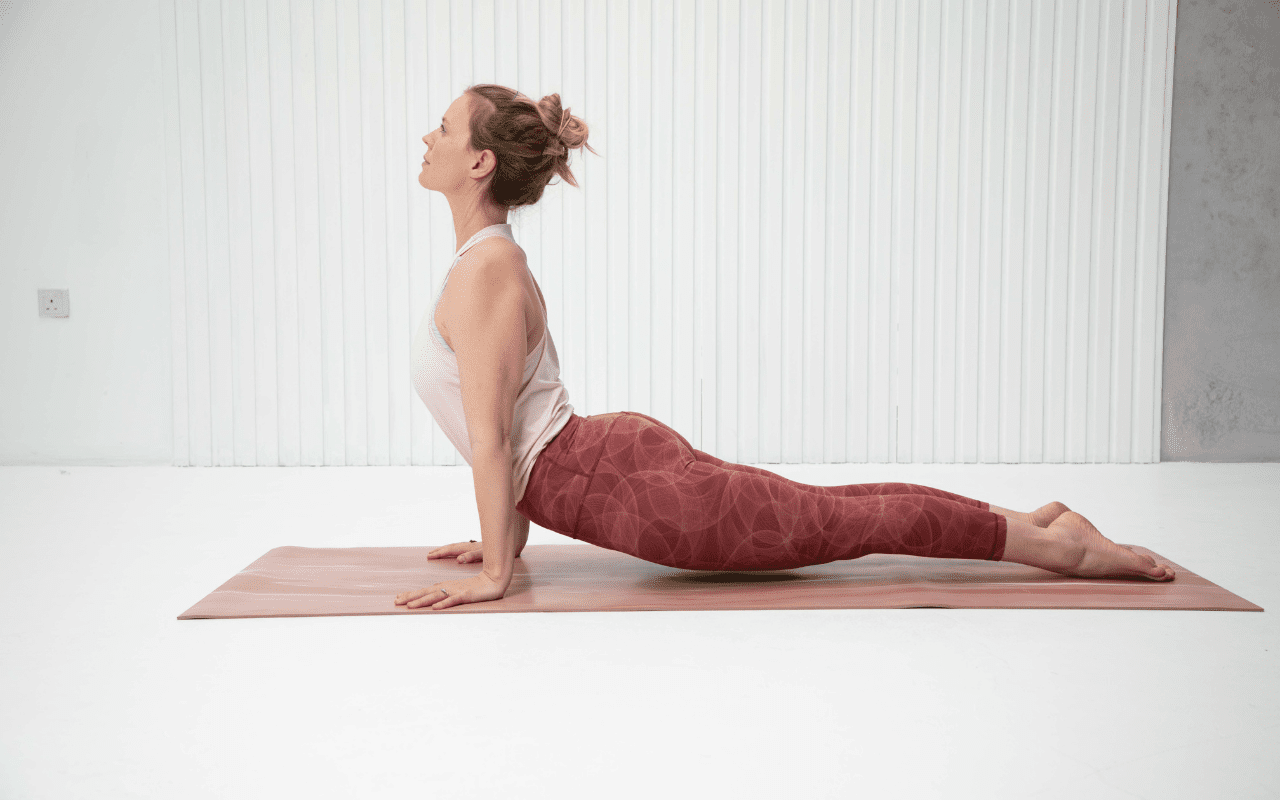
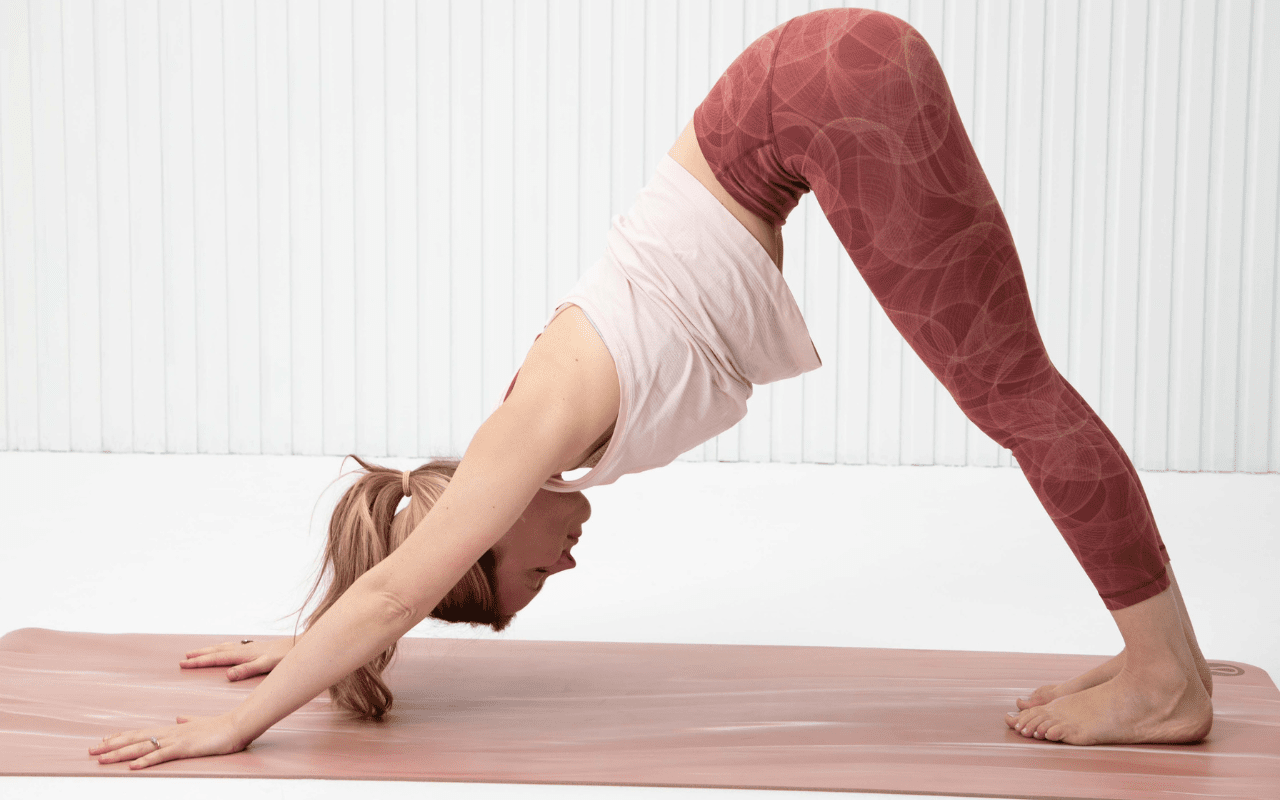
4. Adho Mukha Shvanasana
Press into your hands and sit back into child's pose (Balasana, not shown) before tucking toes and lifting yourself up into a downward-facing dog (Adho Mukha Shvanasana). Here, stretch out your spine by actively drawing into your hands, focus on releasing and shaking your head out from side to side. Begin to lift your heels, up and down, lengthening the hamstrings and encouraging the weight of your body back into your legs.
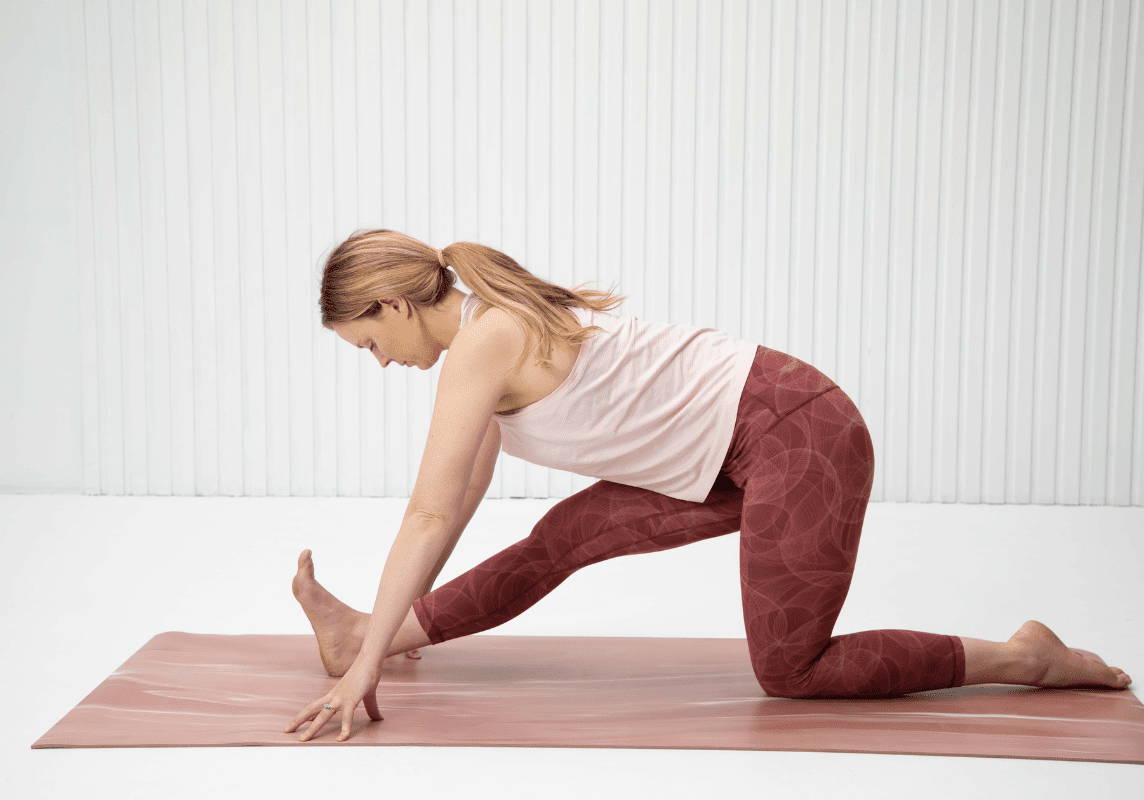
From down dog, step your right foot forward in-between your hands, lower the back knee and keep your hands on the ground (or blocks if you require arm extenders). Lift your chin up: this will extend the spine, opening up the front body. Now roll back, begin to straighten the right leg as you lift your right toes skywards (Ardha Hanumanasana). Feel free to walk your hands slightly back. You can also keep your hands on blocks if your hamstrings feel a little tight.
Lower the head here, rounding the spine and hollowing out the tummy. Now repeat this rolling back and forward in union with the breath. Coming forward, inhale, bending the front knee and gazing upwards, before exhaling, rocking back into a half split again.
After repeating four times on the right leg step back into down dog before repeating on the left leg (Ardha Hanumanasana).
5. Ardha Hanumanasana
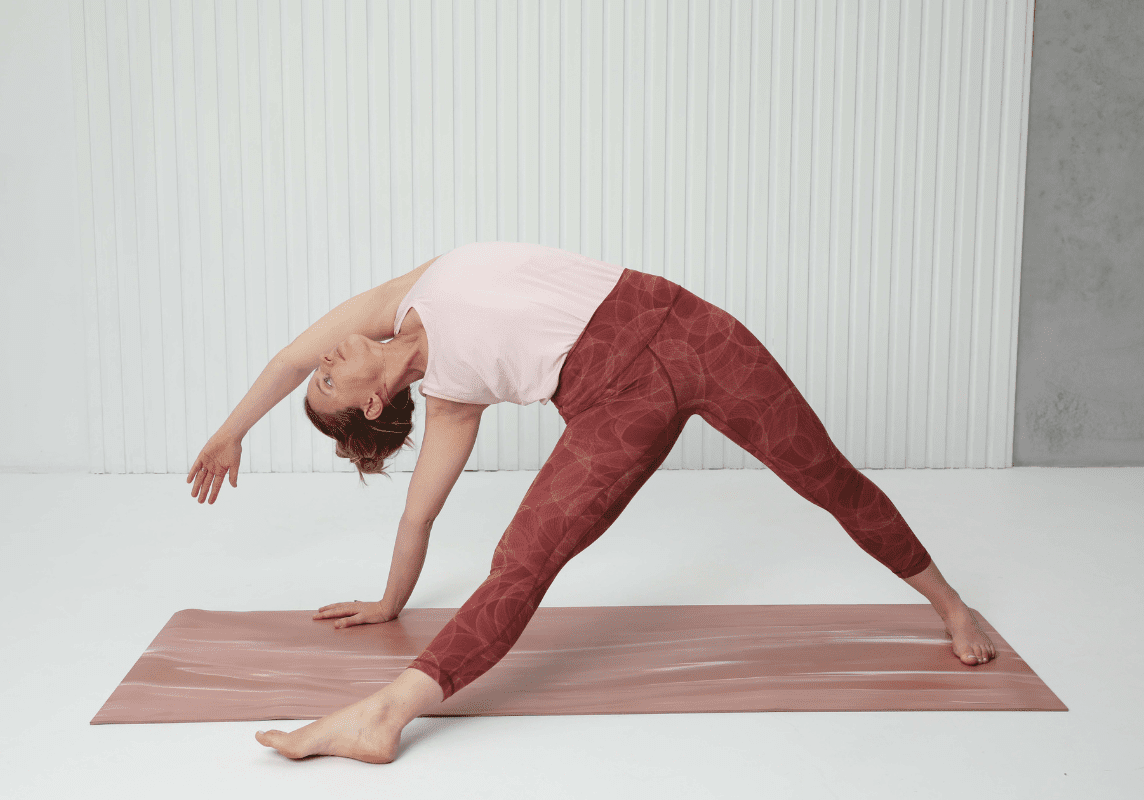
6. Patita Tarasana
From downward dog, lift the right leg up and back, pointing your right toes to the sky into three-legged down dog. Begin to slide your right leg underneath the left arm, press hard into your right hand as you raise your left hand into the air (Patita Tarasana, or fallen star pose). Lift your chest and hips upwards, as you ground downwards through the feet.
Hold for a few breaths while you concentrate on opening up the spine and engaging the core.
Keeping the left hand up, and the heels still, lower down into seated. Keeping the legs stretched out, sit tall reaching your hands upwards now begin to forward fold into the legs (Upavistha Konasana, or wide angle seated forward bend, not shown). All other body time to adjust to this fold by breathing slowly and mindfully, then start to walk the hands further away from the body. Keep your feet flexed and imagine lengthening the spine forwards instead of overly rounding the vertebrae.
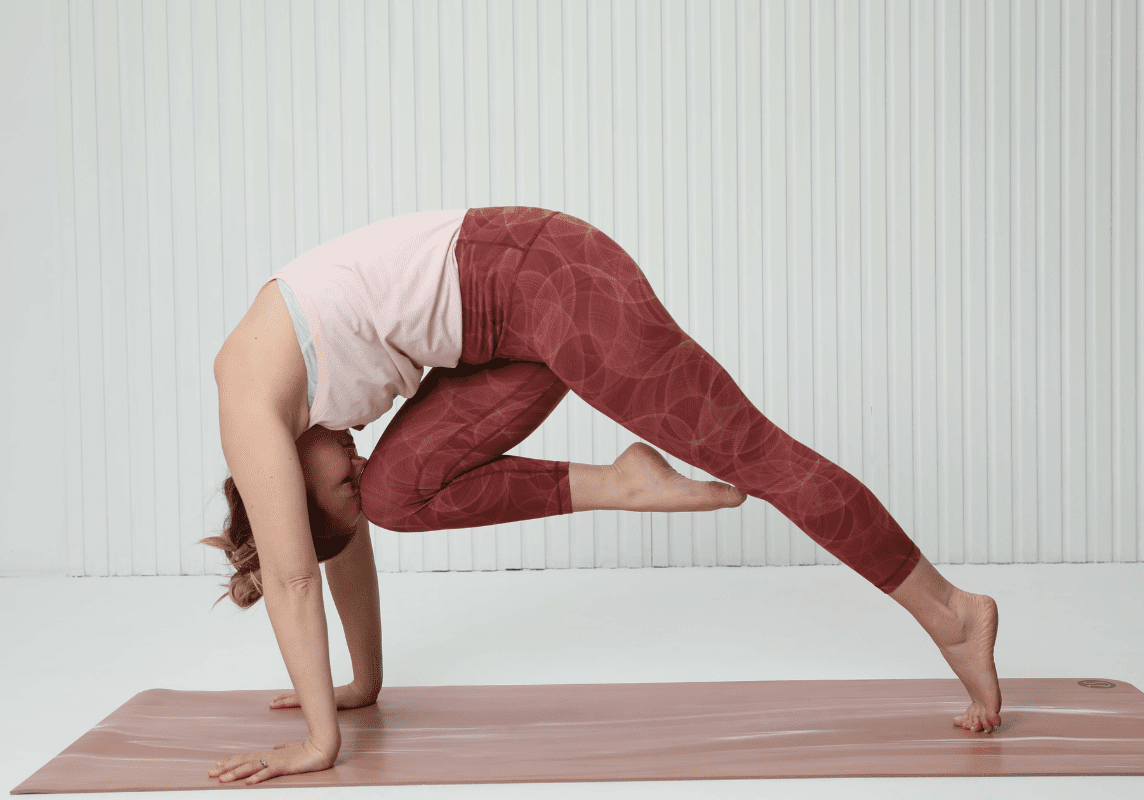
After a few breaths, start to sit up, bring your hands to the top of your mat and start to slide the right knee to your nose (knee to nose pose), before sliding the knee to your right wrist towards pigeon pose (Kapotasana, not shown). Extend the left leg back. If you feel tightness in the hips/glutes, there is an option to sit up using a block under the hands or the right hip for extra support. If you are folding towards the floor, there's an option to either rest your head on a block or on your hands. Hold for at least 5-10 breaths before repeating this sequence on the left leg.
7. Knee to Nose
After finishing pigeon on the left leg come to lie on your back with your knees bent, feet flat on the floor and once again press the lower back into the floor. Notice how your spine feels after this short and playful flow.
Watch the mini sequence below, brought to you in partnership with Isabel Lankester Yoga
Enjoy the full yoga studio experience from the comfort of your own home with 100+ more on-demand and live-stream classes, from power yoga and vinyasa to yin, meditation and slow flows. isabellankesteryoga.com
Discover more Yoga at Home sequences.



